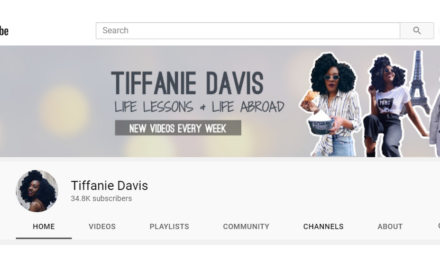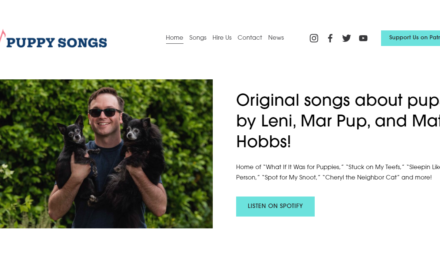Until a few years ago, I had never heard of Nipsey Hussle (aka Airmiess Joseph Asghedom). Shame on me.
Nipsey wasn’t just an amazing rapper but a strategic entrepreneur. Among other things, he opened one of his Marathon Clothing stores in the Crenshaw district in Los Angeles because he wanted to invest in his neighborhood. But I digress.
I learned of Nipsey after discovering this quote:
“As an artist, as a brand, as a rapper, as a musician, you know you got a window and a lot of people, even an athlete; they don’t have an exit strategy. It’s just living in the false reality that it’s going to be like this forever.”
Nipsey was a smart man. (He died in 2019.)
It doesn’t matter what the content creators’ industry is, where they live, or how many people are involved in the business. Content entrepreneurs almost always lack an exit strategy.
Maybe you think you don’t need one. Perhaps you want to leave the business to your kids. Perhaps you want your business partner to take over. Maybe you dream of selling big someday. Or maybe you don’t think your content business is worth anything.
No matter the reason, you need to get that plan on paper immediately.
When do you begin the exit strategy? When you start the content business.
When do you begin the exit strategy? When you start your #ContentBusiness. @JoePulizzi shares how. Share on XMy exit strategy plans
When I left an executive media position to start what became the Content Marketing Institute, I had dreams of selling for millions. But at first, I did nothing about it. I thought about how amazing it would be, but I didn’t plan for my exit strategy.
In 2008, a year after starting the business, I wrote in the financial section of my goals list: “My wife and I sell the company in 2015 for more than $15M.”
That year, the business generated about $60K in revenue and took a $50K loss. The business was worthless. In that context, my goal was laughable and ridiculous.
A year after starting his #ContentBusiness, @JoePulizzi set a goal to sell the company for over $15M. It was laughable, given revenue was $60K. Here's what happened next: Share on XAs crazy as it was, this is the statement I read to myself twice a day, once in the morning and once each evening. Every so often, I tweaked the overall strategy for the business to help deliver on that goal. My wife and I made thousands of decisions over several years to make that statement a reality.
We had reasons for choosing that year (2015) and that price tag ($15M). First, my children would be 14 and 12. My hope was to sell the business to spend time with them before they left for college or their next journey. Second, my wife and I did several analyses and believed $10M would allow us to do all the things we wanted to do for our kids, our charity, and our style of living. We conferred with our accountant and attorney, did the math, and realized we’d need to sell for $15M to take home $10M after employee gifts as well as federal and state taxes.
Your exit strategy
Visualize yourself and your family in 10 years. Where are you? What are you doing? What’s different? How are you making the world a better place?
Author and speaker Jay Acunzo never thinks about exiting his content business. He says, “My goal with the business is to have an impact. And if someday, the way I can have an impact and help more people is another organization acquires ours, great. We’ll consider that. But the reason I’m doing this business is I see it as a way to construct a high-leverage entity to affect change. And so I will do anything that fits the why and fits the mission, so long as it’s helping people. I’m doing the thing I want to do and want to see how long the party can last.”
Jay’s strategy is different from mine. He writes all his business goals in something he calls “The Grand Vision,” which everyone on his team can access.
How will you build your grand vision?
The Edward Lowe Foundation shares several steps in creating an exit strategy:
- Pick a target date for a change in your role.
- Get feedback from your family or investors. They need to be aware of your thinking (even those who don’t work in the business.)
- Create the plan. You can sell the content business to your children, employees, or a strategic or financial buyer. You also could merge with another company.
- Publish the plan. Your partners and family members should know your intentions. One of the best things we did when we sold our company was to make sure the management team knew ahead of time and was compensated for any transaction.
- Implement the plan.
Identify potential buyers
By 2010, the Content Marketing Institute business model started coming into form. Revenue opportunities presented themselves, and I could envision the company we would become. I also could envision the types of companies that would want to buy it. Over a few months, I listed them. I included only strategic buyers (not financial buyers) since I did not want to stay with the business too long after the sale.
The list included pure media companies, event companies, education and training companies, consulting companies, and even a few of the organization’s sponsors. After compiling an all-encompassing list, I narrowed it to six.
How? I chose companies that I believed (1) would keep the mission of the organization strong and (2) had the money to pay at or over the asking price.
Flesh out the details
Once you have your top five or six, fill in the gaps. A spreadsheet works best with these columns:
- Parent company
- Acquiring brand: Does the parent company have a sub-brand or brand extension that would be integral in the purchase? For example, would Alphabet/Google (the parent company) buy your business directly, or is the purchaser Nest (a sub-brand of Alphabet)? In the latter case, the deal probably would still go through Alphabet, but Nest would be the one in the negotiation room.
- Rationale: Why would each company want to buy your business? Does your Content Inc. model satisfy a content gap for the buyer? Do you have access to an audience it desperately needs? Have you developed a product that would enhance its portfolio?
- Key contacts: Who is the decision-maker? Who are the gatekeepers to get to the decision-maker? Is this one person’s decision, or are multiple team members involved? Identify them.
Meet and greet
Nice start. Now the work begins.
Your quest, over the next 12 to 18 months, is to meet and/or chat with each key contact. Don’t mention anything about selling the company. At this point, just get to know them and form a business relationship. Maybe (just maybe) there is a project both companies could work on together (a win-win).
Do the research and find out what events your contacts speak at or attend. (I set up appointments and meetings at trade shows and in-person events.) Send an email to set up appointments. Something like:
Hi Sue,
Not sure if you know me, but I am Joe Pulizzi, founder of the Content Marketing Institute. I’ll be attending XYZ event and would love to buy you coffee if you have 30 minutes. Would just be nice to meet, catch up, and talk shop. I have XYZ times and dates available. If that doesn’t work, shoot me some alternative times.
Joe
Keep your email short and to the point, and always include times and dates (executives hate back-and-forth emails). You may be surprised how many meetings you can get this way. If you don’t have an email address, try a direct message through Twitter or LinkedIn.
Nurture the relationship
Once you’ve met the contacts, the nurturing process begins. Every other month, send them an important link or report. It doesn’t have to be much, but “Thought this report would be of interest. Check out page four” goes a long way.
Finalize your potential buyer list
Some exiting content entrepreneurs do not limit the prospective buyer list. They like the possibility of having more diverse offers. My preference is six to eight companies, but if you need a few more on the list, that is fine. The point is that you’re not tweeting to the world that your business is for sale. You are approaching a few trusted people and businesses that should be interested in purchasing your business. You have done your research and know there is a fit.
Don't tweet your #ContentBusiness is for sale. Approach a few trusted people that should be interested, says @JoePulizzi. #ExitStrategy #CreatorEconomy Share on XGrow toward the goal
My wife and I wanted to close a deal in 2015. The problem? By the end of 2014, we did not have the financial numbers to justify a $15M valuation. (I explain more on valuation in How to Sell Your Content Creator Business.) Because of this, we made multiple decisions in 2014, including purchasing two small properties and an email database. We believed those purchases, along with continual organic growth, would get us to where we needed to be.
It worked. At the beginning of 2015, we were ready to execute the rest of the strategy.
Get started now
If you don’t have an exit strategy, don’t worry. Take a few weeks and think about what you want your business to become. Remember, you are a content creator, but you are a small business entrepreneur first and foremost. And as Nipsey Hustle said, if you don’t have an exit strategy, you are “living in the false reality that it’s going to be like this forever.”
Set the goal. Make the list. Form the relationships. Hit your numbers.
Now, if you are ready to actually sell your business, here are all the details on how I sold my content business.
About the author
Joe Pulizzi is founder of multiple startups including content creator education site, The Tilt and is the bestselling author of seven books including Content Inc. and Epic Content Marketing, which was named a “Must-Read Business Book” by Fortune Magazine. Joe is best known for his work in content marketing, first using the term in 2001, then launching Content Marketing Institute and the Content Marketing World event. He has two weekly podcasts, the motivational Content Inc. podcast and the content news and analysis show This Old Marketing with Robert Rose. His foundation, The Orange Effect, delivers speech therapy and technology services to over 200 children in 34 states.










